The Niavaran Palace Complex is the palace where the last royal family of Iran, the Pahlavi family, resided before leaving the country. In 1958, the former Shah of Iran, Mohammad Reza Pahlavi ordered the former building that remained from the era of Fath Ali Shah Qajar to be dismantled and for this new palace to be built instead of it.
The project took several years to finish and finally it was ready to be used in 1967. This palace was originally built as a place to accommodate royal guests but it soon became the main residence of the Pahlavi royal family.

The original architecture for the Niavaran Palace complex was Mohsen Foroughi, the renowned Iranian architect who was the master of mixing ancient Persian ceramics art with the modern concepts of architecture.
He was the first Iranian architect who was hired for a government project. One of the features which makes Niavaran Palace a fascinating building is that it was the first Iranian palace that was built with the ability to open the ceiling to view the sky at any time you wish. Such an architectural genius was never established in other Iranian palaces.

The Niavaran Complex is comprised of 6 buildings in a spacious garden of 11 hectares which was originally used as summer residence of the former Qajar Shah of Iran Naser al-Din Shah in 19th century.
That is why the Niavaran Palace was originally named as the Naser al-Din Shah Palace and was later named as Sahebgharanieh Palace. The three main buildings inside the Niavaran Palace Complex are the Sahebgharanieh Palace, Niavaran Palace, and Ahamd Shahi Kiosk (Kiosk is a type of pavilion).
Sahebgharanieh Palace

Sahebgharanieh Palace was Naser al-Din Shah Qajar’s favorite summer residence. He ordered to build this palace at a place of much higher altitude of the city and the surrounding environment.
The Jahan Nama Hall which stands for “showcasing the entire world” provides a divine view of the entire city because of this higher altitude that the building was built on. Haj Ali-Khan Hajib al-Dowleh was the architect of the Sahebgharanieh original building that included many chambers and private rooms. Sahebgharanieh showcases some of the best Persian mirror-work (Ayeneh Kari).
The pillars and their Owrsi design remind one of the architecture of the Pre-Islamic and early Islamic era.
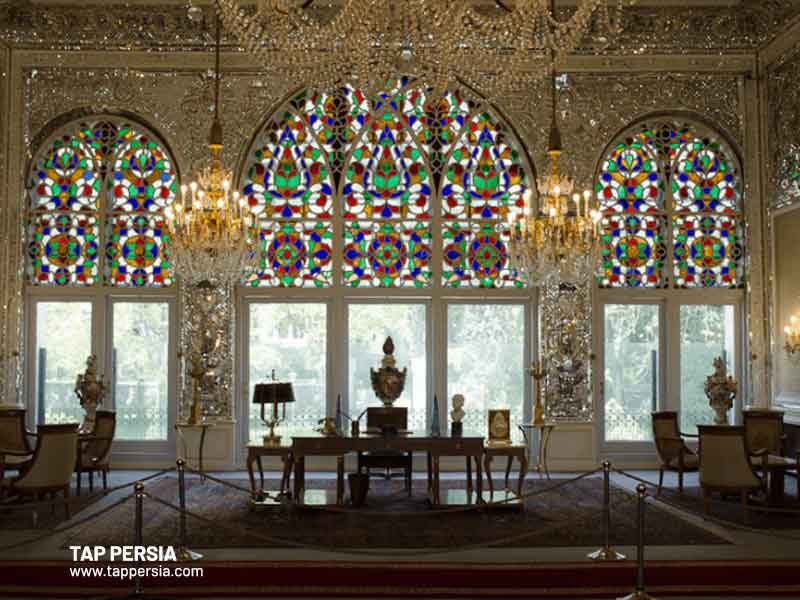
Sahebgharanieh continued to be one of the Qajar kings most favorite resorts. However, during the Pahlavi era, it was almost forgotten until 1958 when Mohammad Reza Shah Pahlavi ordered for its rehabilitation and built a new building there that soon became the Pahlavi royal family’s main residence.
The Mirror Hall and Jahan Nama Museum
In1977, the former queen of Iran, Farah Diba, established a museum inside the Sahebgharanieh Palace to showcase the gifts that have been given to the royal family over the years along with many other items.
The title Jahan Nama (a mirror to the world) museum was chosen for it later on since it showcased the precious artwork and other valuable items from all corners of the world.
Jahan Nama museum consists of five galleries that showcase the history and art in the world from the pre-Columbian era to modern artworks by some of the contemporary Iranian and foreign artists.

Here’s a list of some of the items that are held in Jahan Nama Museum:
- Art works of foreign artists including Georges Braque French painter, Salvador Dali Spanish artist, Amedeo Modigliani Italian painter, Paul Gauguin French artist, Paul Klee Swiss-German artist, Pablo Picasso Spanish painter, Camille Pissarro Danish-French painter, Pierre Auguste Renoir French painter, Diego Giacometti
Swiss sculptor, Fernand Leger French painter, and Mark Chagall French-Russian painter. - Art works of contemporary Iranian artists, including Sohrab Sepehri, Manouchehr Yektayi, Naser Oweysi, Faramarz Pilaram, Jafar Rouhbakhsh, Parviz Kalantari, Bahman Mohases, Sirak Malkounian, Jazeh Tabatabaei, and Parviz Tanavoli.
- Sculpture of Buddha belonging to 2nd century A.C.
- Ancient ceramic and pottery handicrafts belonging to the Central and Southern America, Egypt, India, Africa, and Far East.
 The Padmapani Goddes an Example of Ancient Far-Eastern Art
The Padmapani Goddes an Example of Ancient Far-Eastern Art
- Ancient Persian pottery and ceramic artifacts.
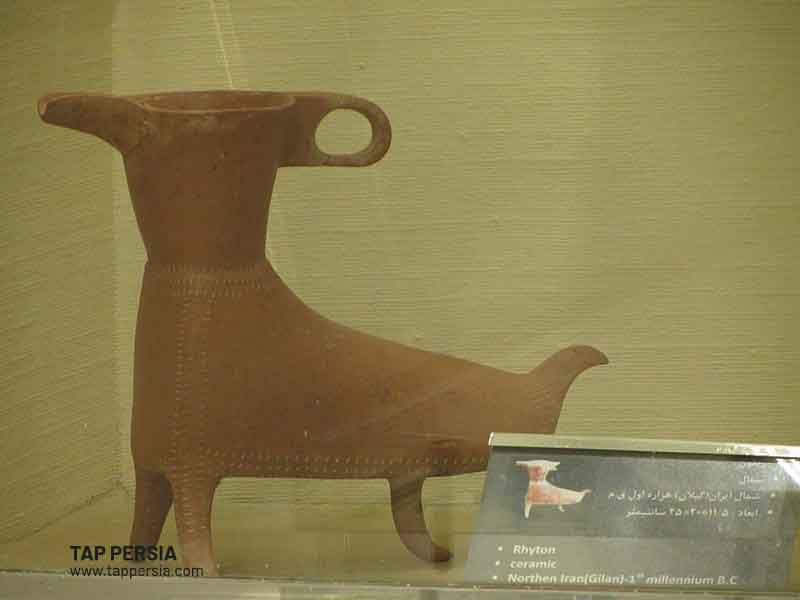
Rhyton Ceramic Artifact belonging to 1st Millennium B.C.
Many other historical objects and artworks are showcased in Jahan Nama Museum. There is no doubt that Jahan Nama Museum provides an introduction to the art and history of the world within different eras, from ancient times to the present.
That is why it is called the “Jahan Nama Museum” since it gathers different parts of world history in one place.
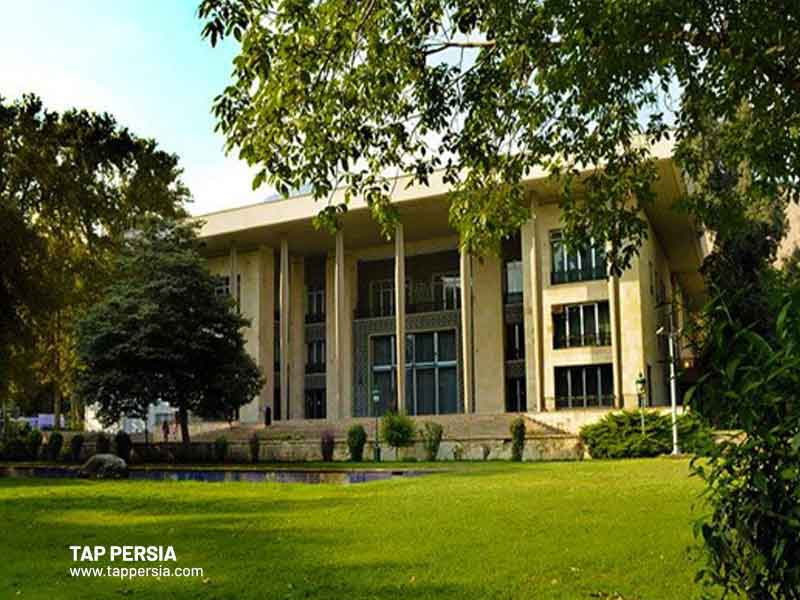
Perhaps of the most significant aspects of Jahan Nama Museum is its ceiling and the artwork that has been incorporated in it. In 2004, the museum was temporarily closed for the purpose of renovation and restoration.
Niavaran Palace
The architecture of this palace reminds one of the Pre-Islamic and Islamic arts and architecture style. The rectangular shape of the building is the modern touch on ancient Persian architecture. It is a two-floor building. The first floor is the place where the royal guests were welcomed and accommodated.
The ground floor consists of a spacious hall which is designed by exquisite furniture that was formerly done by a French design team.
The high walls and the mirrors that have been incorporated in the walls create a perfect lighting for the entire hall that makes it all bright like day light. Upon entering the hall, multiple objects catch your eye that is one of a kind in their own term:
- On one of the pillars in the hall is decorated with the Saghakhaneh art by the renowned artist Parviz Tanavoli.
- China set showcasing Napoleon and the French royal family.
- A silver-ware that is a gift from the Romanian ruler, Nicolai Ceausescu, to the Shah of Iran.
- A painting by Bahman Mohases.
- A painting by Mohsen Foroughi.
- A set of crystal-ware made in Czechoslovakia.
- The Mashahir (Renowned Figures) carpet that was woven in Ravar County in Kerman.
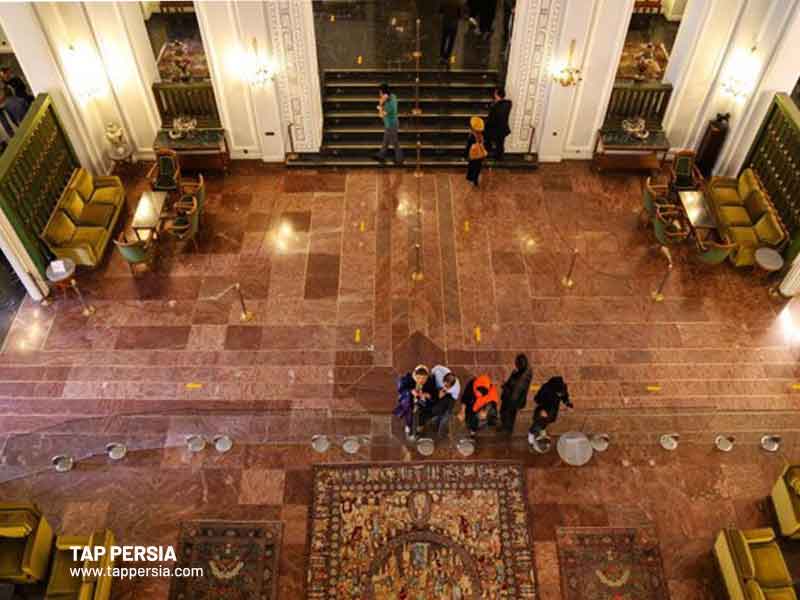
Furthermore, the ground floor of the Niavaran Palace includes a dining room, living room, reception room, private cinema hall, the blue chamber, and multiple other spaces.
The Private Cinema Hall
The private cinema hall inside the Niavaran Palace is one of the most interesting parts of the palace. It is located at the east of the palace and is 400 square meters. The private cinema hall includes the main hall, the apparatus room, the dressing room, and a separate space to manage the light and sound effects.
This room was decorated by Charles Sevigny who managed to create a magical environment. One of the most significant aspects in the decoration of this room is the Chandeliers that are made of aluminum rods and the curtains that are made of aluminum which make a delightful sound while being moved.
The furniture in this room is highly elegant that were made in France by Kenol Company. Multiple paintings from renowned artists can also be spotted on the walls.
For long, visitors were not allowed to visit the private cinema hall. However, in 2016 the General Department of Museums allowed the public to gain access and visit this room as well.
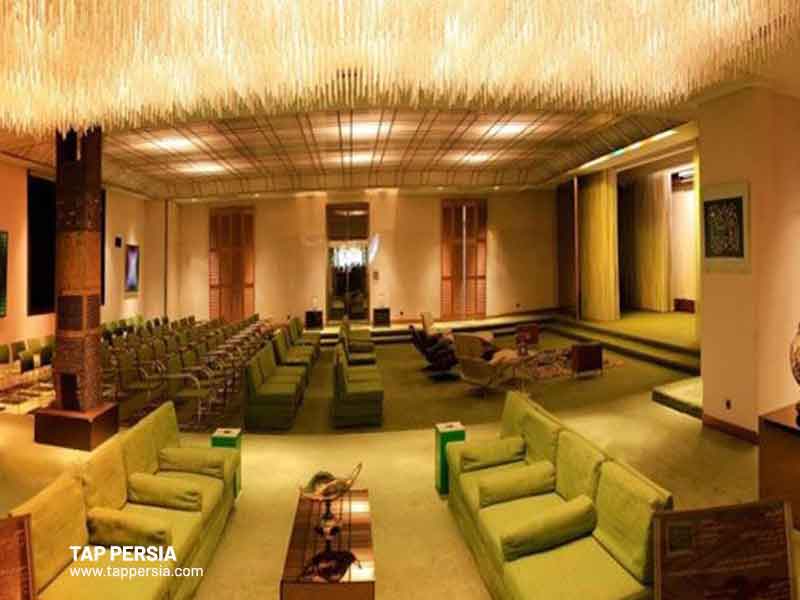
The Blue Chamber
Because of its blue walls and curtains and the fountain that is located right in front of it in the garden, this specific hall in the Niavaran Palace is called the Blue Chamber.

The Blue Chamber was the reception hall for the royal guests. The New Year Party that was held in honor of Jimmy Carter, the former president of the United States, in 1978 was held in this chamber.
This chamber is specifically known for its high ceiling, crystal chandeliers, and Stucco art on the walls.
The Guest Reception Room
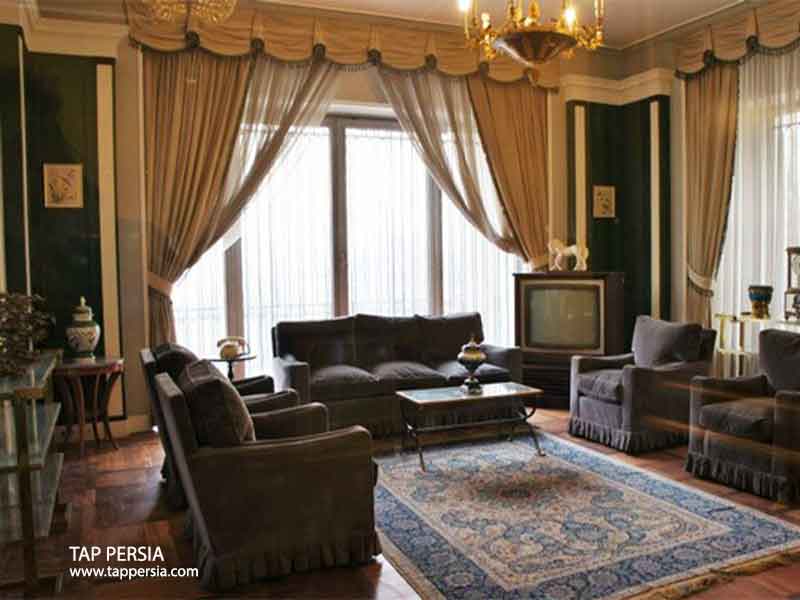
At the southern part of the Niavaran Palace, the guest reception room is located. This is where the men of state and royal advisors had to sit before granting entry to the chamber of the Mohammad Reza Shah Pahlavi.
Like many other parts of the palace, this room is also filled with precious artworks by highly reputable artists including:
- “The Orange View” painting by Iran Doroudi
- “The Antwerp Port” painting
- The honorary award given to the Mohammad Reza Shah Pahlavi by the government of Pakistan in 1967.
- The Sabine Women sculpture
The Living Room
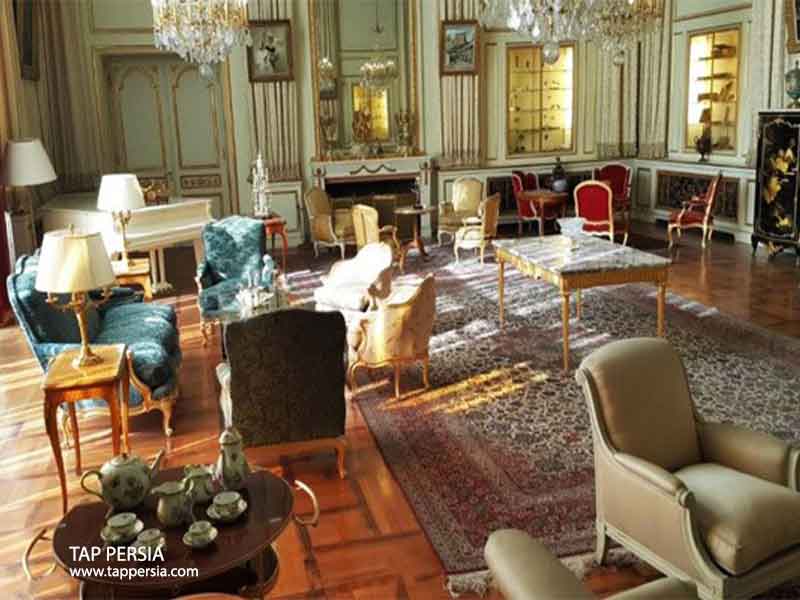
On the southern part of the ground floor the living room is located. Upon the first look, it is the exquisite furniture and decoration that catches one’s eyes.
Since the windows in this room are much bigger than the other rooms, it enjoys a much brighter view. The living room is where the royal guests were served and accommodated during their visit to the palace.
Multiple works of art are showcased in this room including:
- “View” by Alfred Sisley
- “Three Women” by Marie Laurencin
- “Montmartre neighborhood of Paris” by Mauric Utrillo
- “The Jungle” by Marwijk
- The portrait of Mohammad Reza Shah by V. F. Draper
- A portrait of Farah Diba by Vidal Kordas
- A piano that was dedicated to the royal family by the German Embassy of Foreign Affairs.
- Multiple carpets from different regions of Iran, including Kashan, Isfahan, and Tabriz
The Dining Room

On the east-southern part of Niavaran Palace, the dining room is located. The magnificent dishes that were used to serve the food were some of the best quality around the world:
- Rosenthal and Bavaria porcelain made in Germany
- Baraka ceramic made in France
- Moser crystal made in Czechoslovakia
- Silverware made in England in 19th century
- Gold-plated silverware made in France
Other highly magnificent items can be found in the dining room that catches one’s eyes upon entering the room:
- Chandeliers mady by Baraka Company in France
- Shah-Abasi design carpets that were made in Isfahan
- Candlesticks made by Baraka Company in France
- Furniture imported from France
The Sitting Room

The sitting room at the ground floor has a different atmosphere. The exquisite lighting and dark furniture creates a calming environment that sets it apart from all the other rooms in the palace that cry out lively events and commotions. There multiple artworks that are showcased in this room including:
- “The Fox” by Charles Verlat
- A Bakhtiari Persian carpet
- A Satsuma pottery made in Japan in 19th century
- A golden-plated dish that Richard Nixon, the former president of the United States, gifted it to Mohammad Reza Shah Pahlavi in 1973
The Top Floor

The second and top floor is where the Pahlavi royal family resided. The lively nature of this floor indicates that there were once children living on this floor. There are multiple valuable pieces of art that are showcased in this floor, including:
- A carpet belonging to the Seirefian workshop in Isafahan.
- A portrait of Farah Pahlavi by Karim Rohani
- Some Gobelins made in France in 18th
- “The Blue Coast” by Marc Chagall
- “The River and the Meadow” by Houshang Seyhoun
Mohammad Reza Shah’s Personal Room

Mohammad Reza Shah Pahlavi stayed in his room on the top floor to rest during the day. There are multiple pieces of artwork in this room that one cannot take off his/her eyes from, including:
- A carpet made in Haj Khalili workshop in Tabriz
- “The Portrait of Two Women” by Jean-Marc Nattier which was gifted by Senator Mohsen Foroughi to Mohammad Reza Shah Pahlavi on the occasion of his coronation ceremony in 1967.
- A wall carpet picturing the Reza Shah Pahlavi and his wife Taj al-Molouk that was made in Kerman.
- A calligraphic portrait of The Holy Prophet of Islam, Mohammed, by Manouchehr Sanei
- A desk made in France in 18th
Farah Pahlavi’s Dressing Room
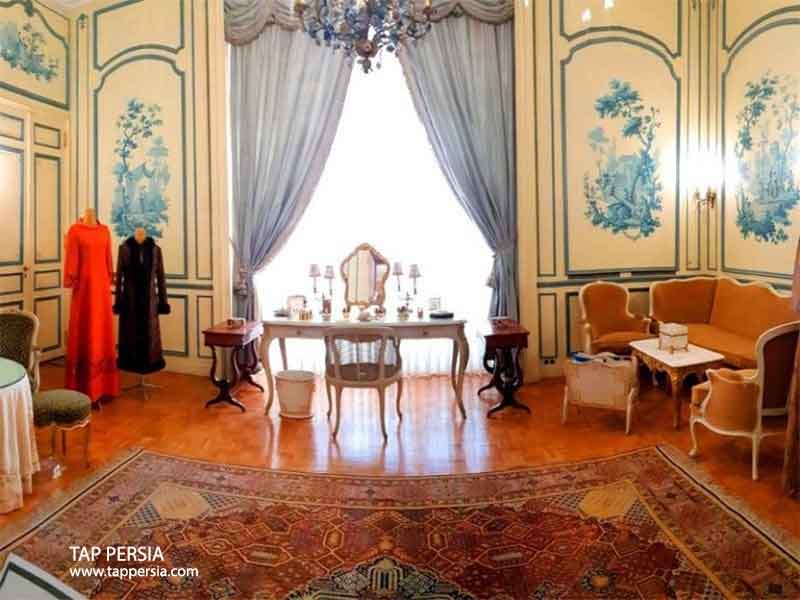
The former queen of Iran was worldly known for her exquisite sense of style. Some of her famous garments that she wore during special occasions are still kept at the Niavaran Palace. Her dressing room is also placed at the top floor of the Niavaran Palace, and it is one of the most beautiful rooms in the entire palace.
The Royal Bedroom

The royal bedroom is also placed at the top floor of the Niavaran Palace. In the interior design of this room two colors are used deliberately: gold and white. This design allows the room to create an atmosphere of royalty, prosperity, and calmness which makes it the perfect combination for a bedroom.
The Niavaran Palace’s Ceiling
As mentioned previously, one of the most exquisite factors about the architecture of the Niavaran Palace is its ceiling that can be opened. The ceiling was designed to be opened to let in the light, fresh air, or to provide a clear image of the sky. The middle part of the ceiling can be opened using the electro-mechanic control. The gearbox and engine for this magnificent architectural development was made in Germany.

However, the ceiling of the Niavaran Palace will only be opened on special occasions for the visitors to see. You will need a combination of pure luck and perfect timing to arrive at the palace when the ceiling is already opened.
The Ahmad Shahi Kiosk (Pavilion)
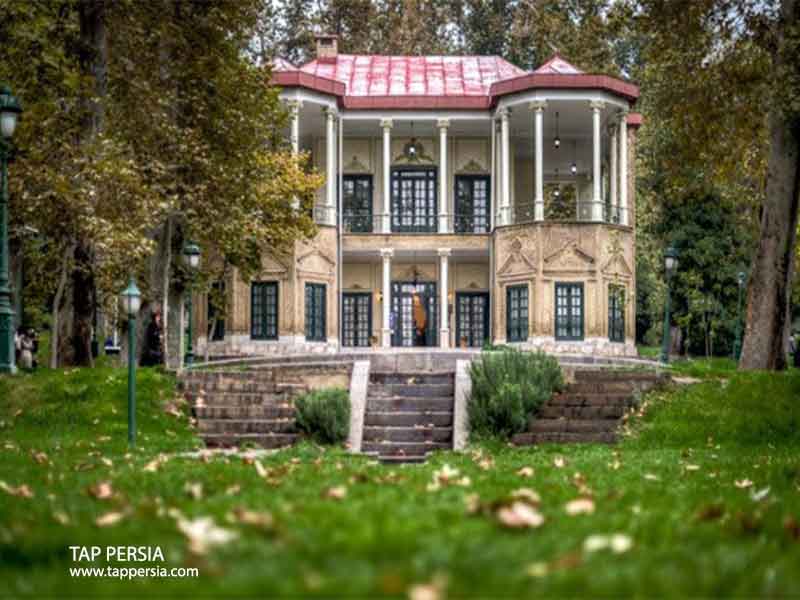
The Ahmad Shahi Kiosk is placed at the center of the Niavaran Complex. The building is 800 square meters and was originally built during the Qajar dynasty.
This palace was formerly used as the summer resort for Ahmad Shah Qajar. On the occasion of his wedding to Farah Diba, Mohammad Reza Shah Pahlavi ordered the reconstruction of the Ahmad Shahi Pavilion. The Ahmad Shahi Pavilion was later on used as the Imperial Office of Mohammad Reza Shah Pahlavi.
click on the Iran tour package to visit more Attractions & Travel Activities.
The Private Library
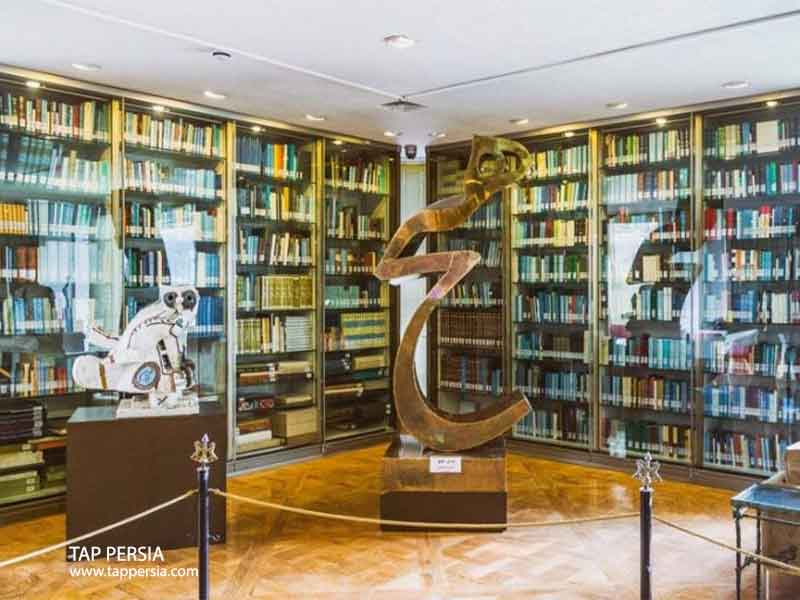
There is a private library at the Niavaran Palace that is located at the north-eastern part of it. The library includes a two-floor building and a basement which estimates for 770 square meters.
Aziz Farmanfarmayan was the architect in charge of the interior design of the library and Charles Sevigny, the American artist, was the artist behind the glass and mirror artwork in the building.
This library was the private study of Mohammad Reza Pahlavi in which there are more than 23000 volumes of books. There are more than 16000 books written in Farsi by Iranian authors along with several books written by foreign authors.
The Museum of the Royal Family’s Cars

One of the things that the former Shah of Iran, Mohammad Reza Shah Pahlavi, was known for was his taste and passion for cars. He was extremely enthusiastic about automobiles and he had a collection of his personal cars at the Niavaran Palace.
He loved cars so much that he even gifted people automobiles whenever he wanted to make a lasting impact on them. Mohammad Reza Shah Pahlavi famously gifted the former ruler of Romania, Nicolae Ceausescu, an Iranian-built luxury car that was sold at an auction to an unknown Romanian collector in 2021.
The Garden Museum of Stone Carvings (Katibeh)

In 2009, the Garden Museum of Stone Carvings was premiered in The Niavaran Palace Complex. This garden was created using the sculptures of the historical stone carvings that have been discovered at various regions of Iran.
According to the officials at the department of Cultural Heritage, the purpose of creating this garden museum was to afford the students and researchers an opportunity to study the ancient languages using the models of these ancient stone carvings.
To ensure the better understanding of these stone carvings, the translation of these ancient stone carvings is also placed next to the duplicated statue. 43 modeled stone carvings are exhibited in this garden museum.
Some of the stone carvings that have been modeled and showcased in this garden museum date back to more than 15 thousand years ago. The stone carvings that belong to various historical eras in ancient Persia are modeled and showcased in this garden museum. The stone carvings mostly cover three major eras of Persian Empire:
- The Medes Empire: In this era, the dominant forms of language were Ashuri, Arami, and Ourati.
- The Partian and Sassanid Empire: The dominant language in this era was the ancient Persian and Akadi language.
- The Iylami and Arami Era (Late Sassanid Empire): The dominant language in this era was the Pahlavi language.
The Niavaran Complex is one of the remaining chapters of the book of the Golden History of Iran. By walking through its gardens, one feels like one has entered a different era. The tall trees and the green land surrounding you makes you feel like you have found paradise on earth.
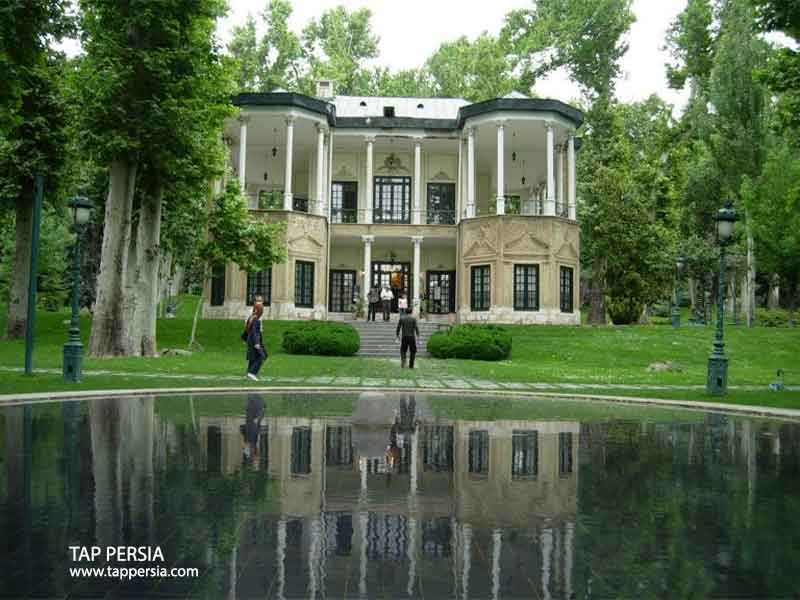
However, it is this garden and the specific design of its buildings that brings you back to the present time. The Niavaran Palace Complex successfully safeguards the past while leaning forward the future. The perfect example of this marriage between the past and future is the magnificent architecture of these buildings.
It is the high ceilings, mirror incorporated walls, and the Owrsi pillars that remind you of the past. While it is the moving ceiling of the Niavaran Palace that provides you with an enchanting view of the future.
If you ever travel to Iran, make sure to visit the Niavaran Complex in the Iranian capital, Tehran. Take as much time as you need to enjoy every feet of this 9000 square meter complex. Do not rush it! Indulge yourself in this visit and take in every single moment of it.
Iran is country with a historical background that dates back to thousands of years ago. If you wish to learn about its history, you need to be generous with your time and attention; you need to be patient. Once you arrive at the Niavaran Complex with such attitude, you can guarantee an experience that is going to last with you for a life-time.
As you marvel at the grandeur of Niavaran Palace, a testament to Iran’s rich history and architectural prowess, remember that Tehran has much more to offer. From its bustling streets to its serene parks, every corner of this city tells a story. Explore the many facets of Tehran, and discover the blend of tradition and modernity that makes Iran’s capital a fascinating destination for every traveler.
If you wish to learn more about the Niavaran Palace Complex or wish to find a place to stay near the Complex that would accommodate your frequent visits to the Palace, contact us via WhatsApp or live chat.
Recommended Tours

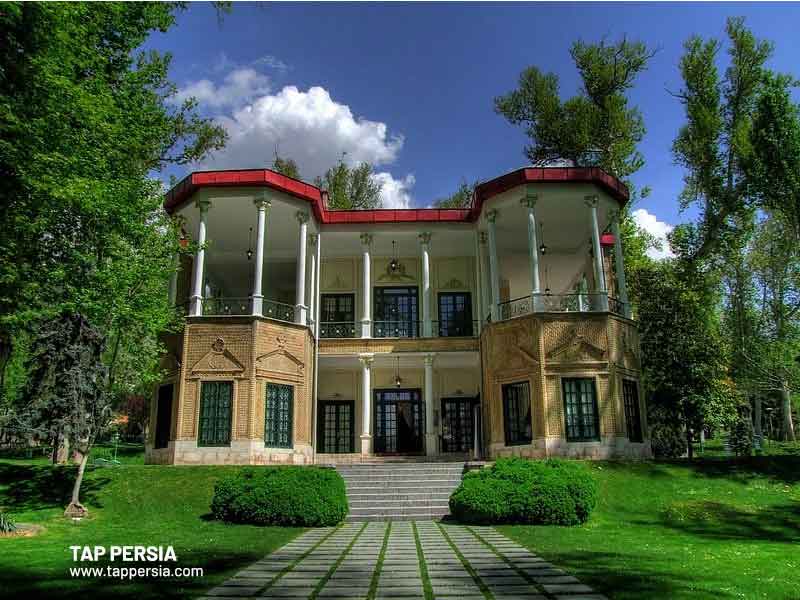
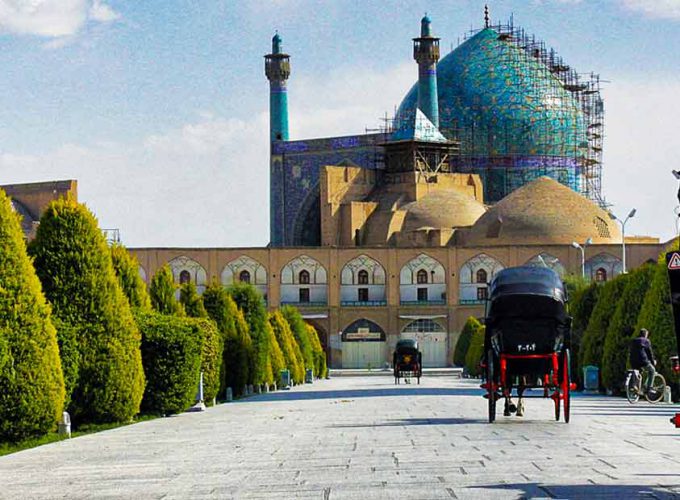

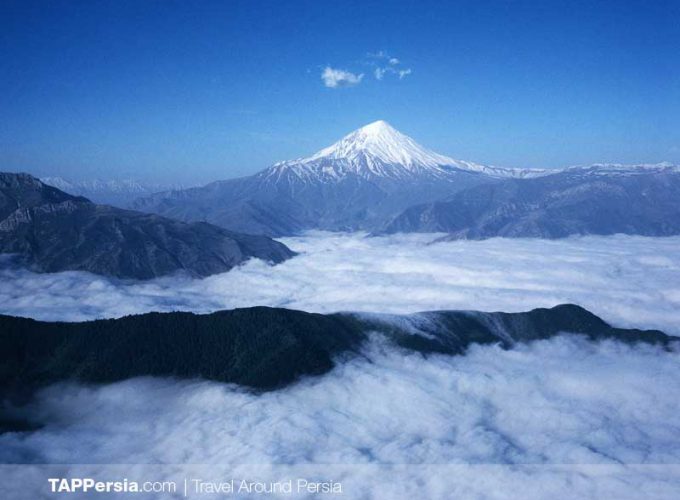
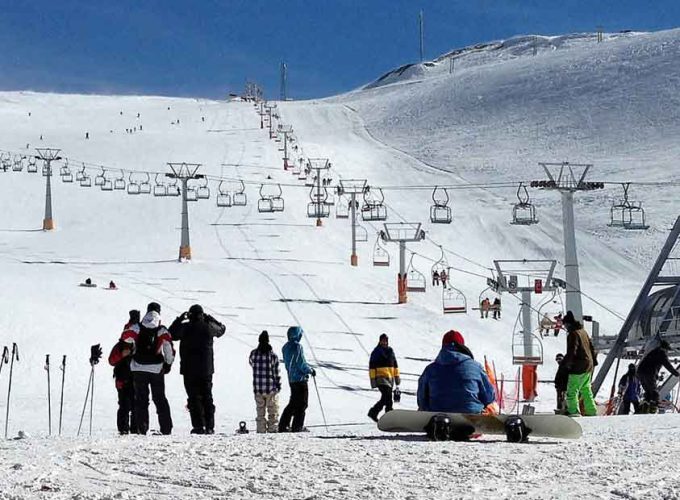
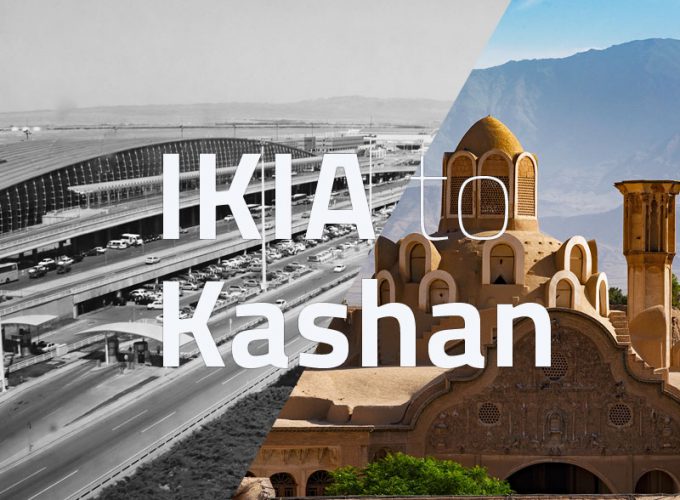
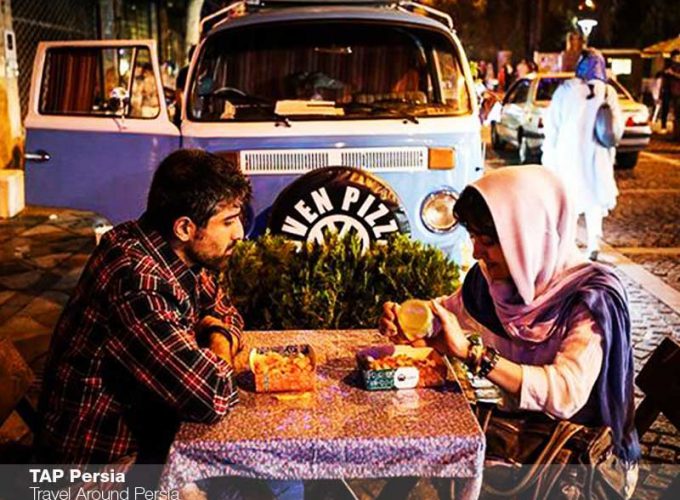


Comment (0)